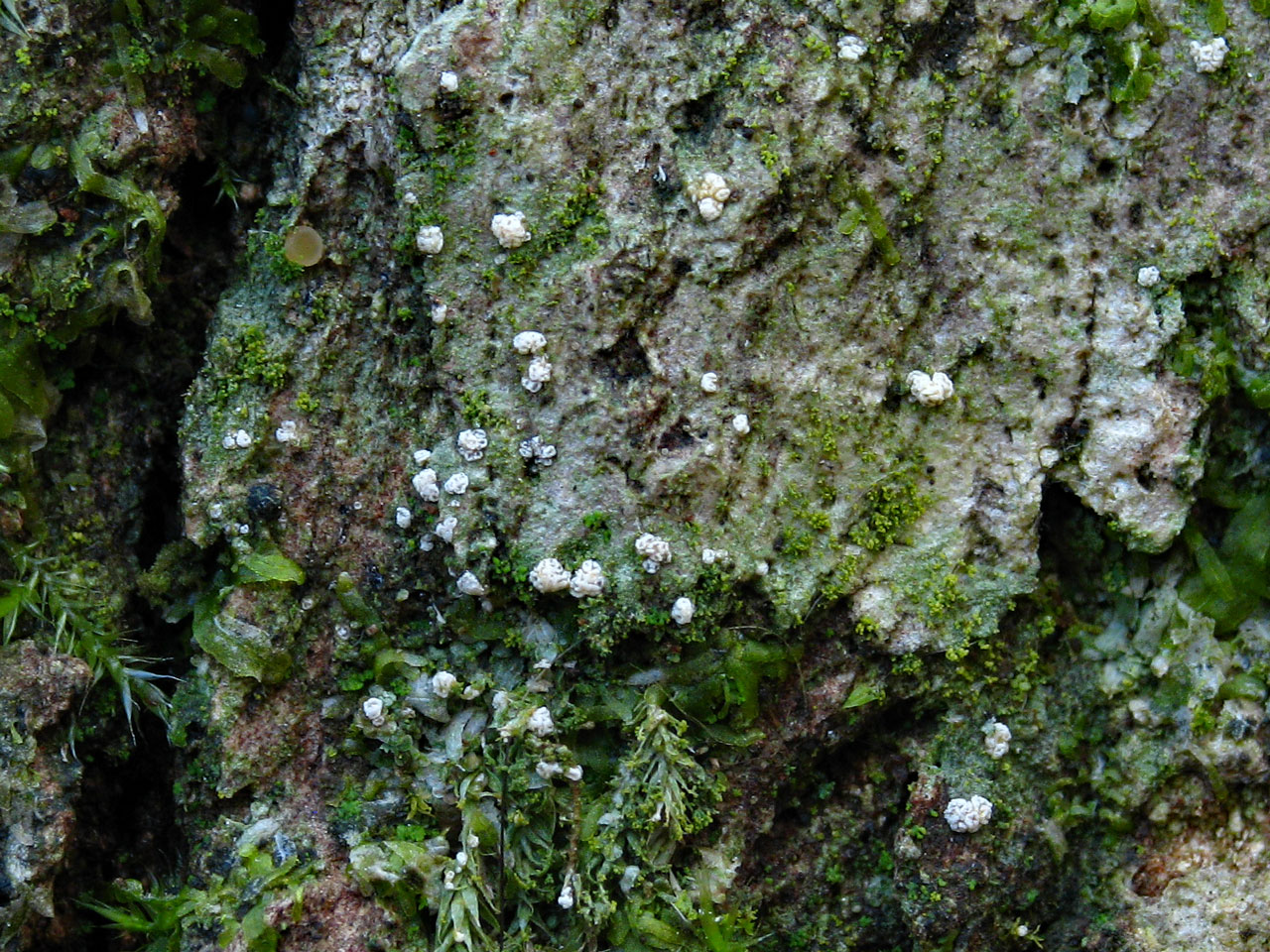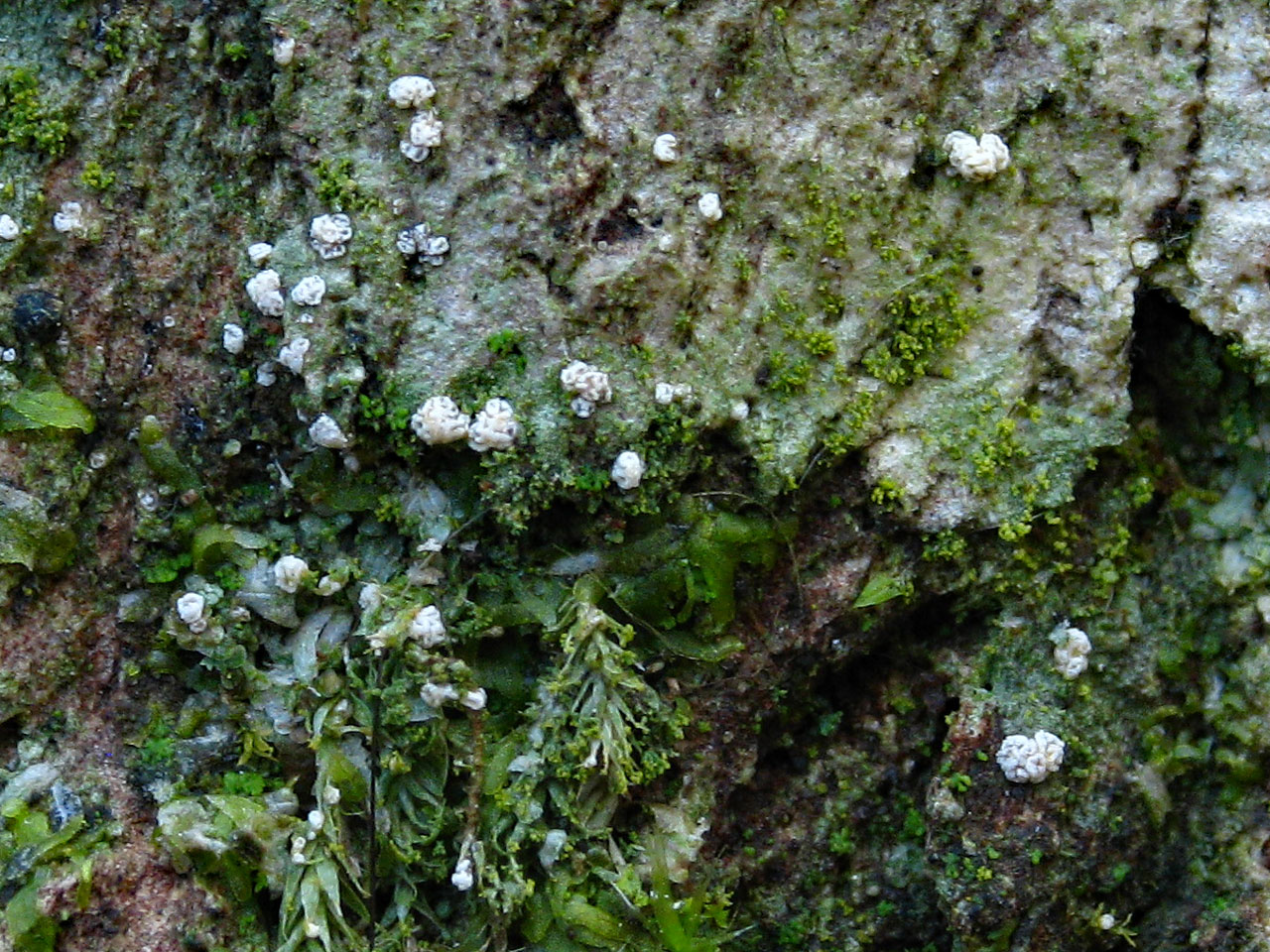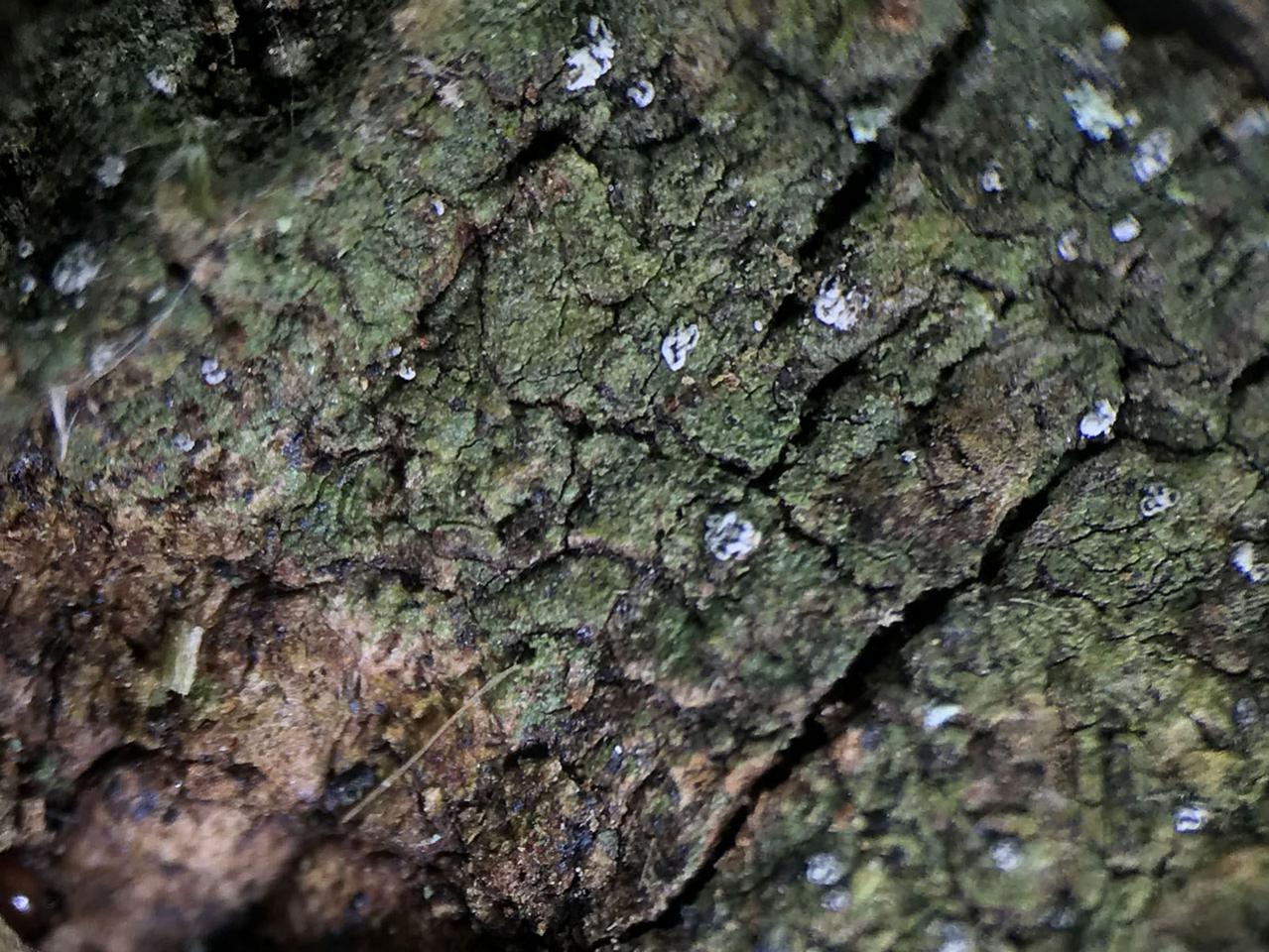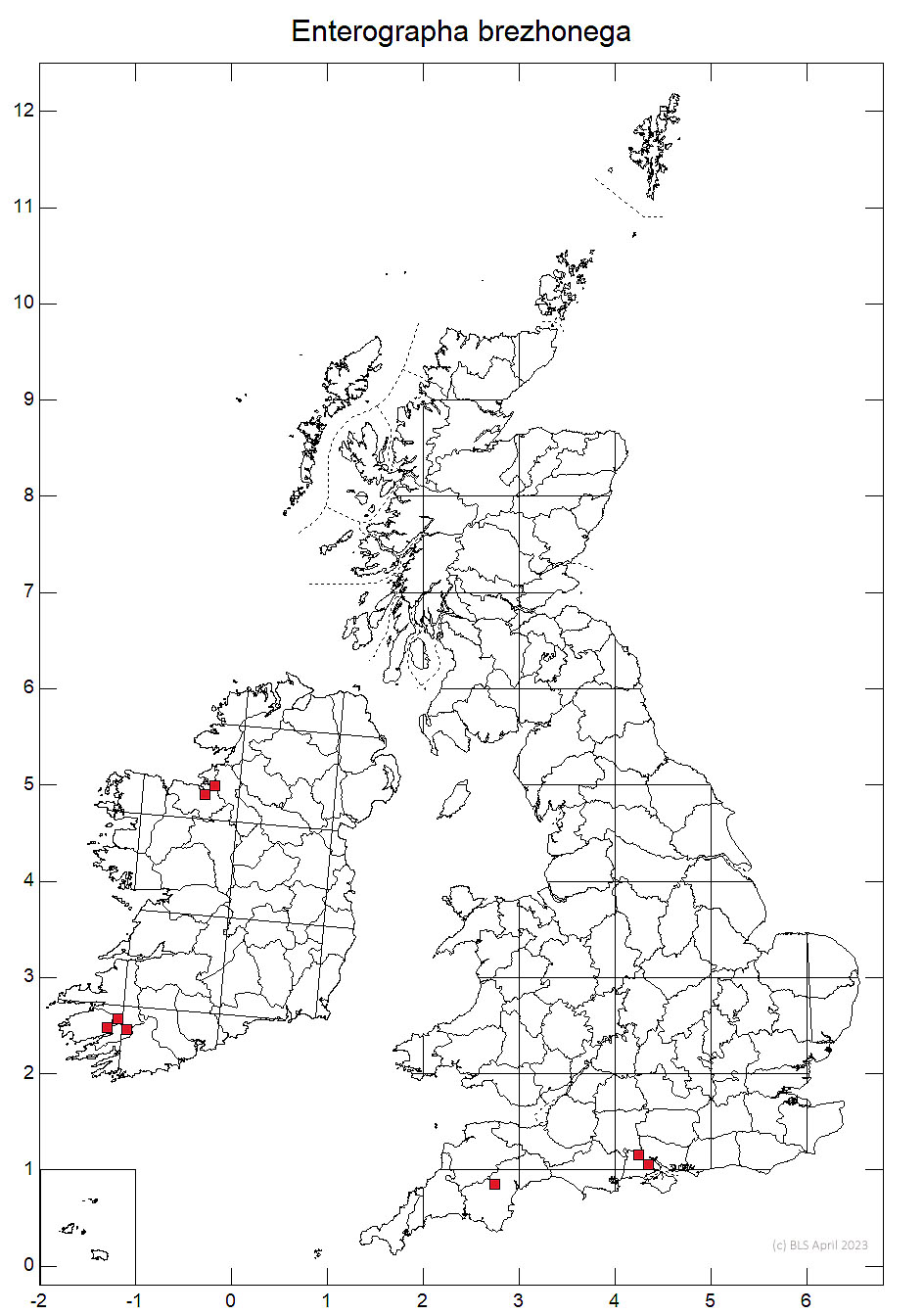Enterographa brezhonega
An obligate parasite of Coenogonium (Dimerella) species, mainly Coenogonium confusum Malíček & Sanderson in ed. (Porina rosei auct. br. pro maxima parte), but also rarely Coenogonium luteum (Dimerella lutea). The thallus is immersed in the host and only convoluted white lirellae are visible. Rare in old growth oceanic woodland in western Ireland and south west England.
Lichenicolous, thallus absent. Apothecia mainly in pseudostromata formed from 2-5 apothecia twisted together, 0.2-0.5 mm diameter, occasionally as single apothecia; pseudostromata white with thin white priuna. Apothecia immersed within pseudostromata, lirelliform, often branched, 0.03-0.1 × 0.1 × 0.6 mm, disc shiny pale grey, orange-brown, dark brown to black, not pruinose, narrowly exposed when wet, obscured when dry. Asci 4-spored. Ascospores (12-)15-20 × 2.5-3 μm, (4-)6-septate. Pseudostromata C–, K–, Pd–, UV–. (Adapted from Sanderson et al, 2009).
The white pseudostromata are easily mistaken as myxomycete fruit-bodies or blobs of Lepraria. On Coenogonium confusum the isidia are usually suppressed in the are infected by Enterographa brezhonega, and the species can be spotted by scanning poorly grown sections of the Coenogonium thallus.
Enterographa brezhonega is occasionally parasitic on Coenogonium confusum and rarely on C. luteum in sheltered and humid old growth woodland. Most sites are pasture woodland or relics of this habitat. Usually found in woods with large populations of Coenogonium confusum, but even in these sites the fungus occurs on low percentage of Coenogonium populations. In the New Forest characteristic of very humid Sessile Oak – Beech pasture woodlands

To date only known from the west of Ireland, the New Forest and a single site in Dartmoor.
Assessed as Vulnerable in Britain on the basis of its restricted distribution, and it apparent preference for sites with large populations of its main host. The latter suggests there will be a limited number of sites able to support the species.
Particularly characteristic of humid high canopied grazed woodlands, where the cessation of grazing rapidly leads to deep shade and crashes in the host population, so likely to be vulnerable to the loss of extensive woodland grazing.
Sanderson, N. A., James, P. W. & Dobson, F. S. (2009) Enterographa Fée (1824). In: The Lichens of Britain and Ireland (eds. C. W.Smith, A. Aptroot, B. J. Coppins, A. Fletcher, O. L.Gilbert, P.W. James & P. A. Wolseley) 387-389.
Sparrius, L. B. & Aptroot, A. (2007) A new lichenicolous Enterographa species from Brittany. Lichenologist 39: 315–318 (2007).
Woods, R. G. & Coppins, B. J. (2012) Species Status No. 13 A Conservation Evaluation of British Lichens and Lichenicolous Fungi. Peterborough: JNCC.
Text by N A Sanderson, based Sanderson et al (2009).





